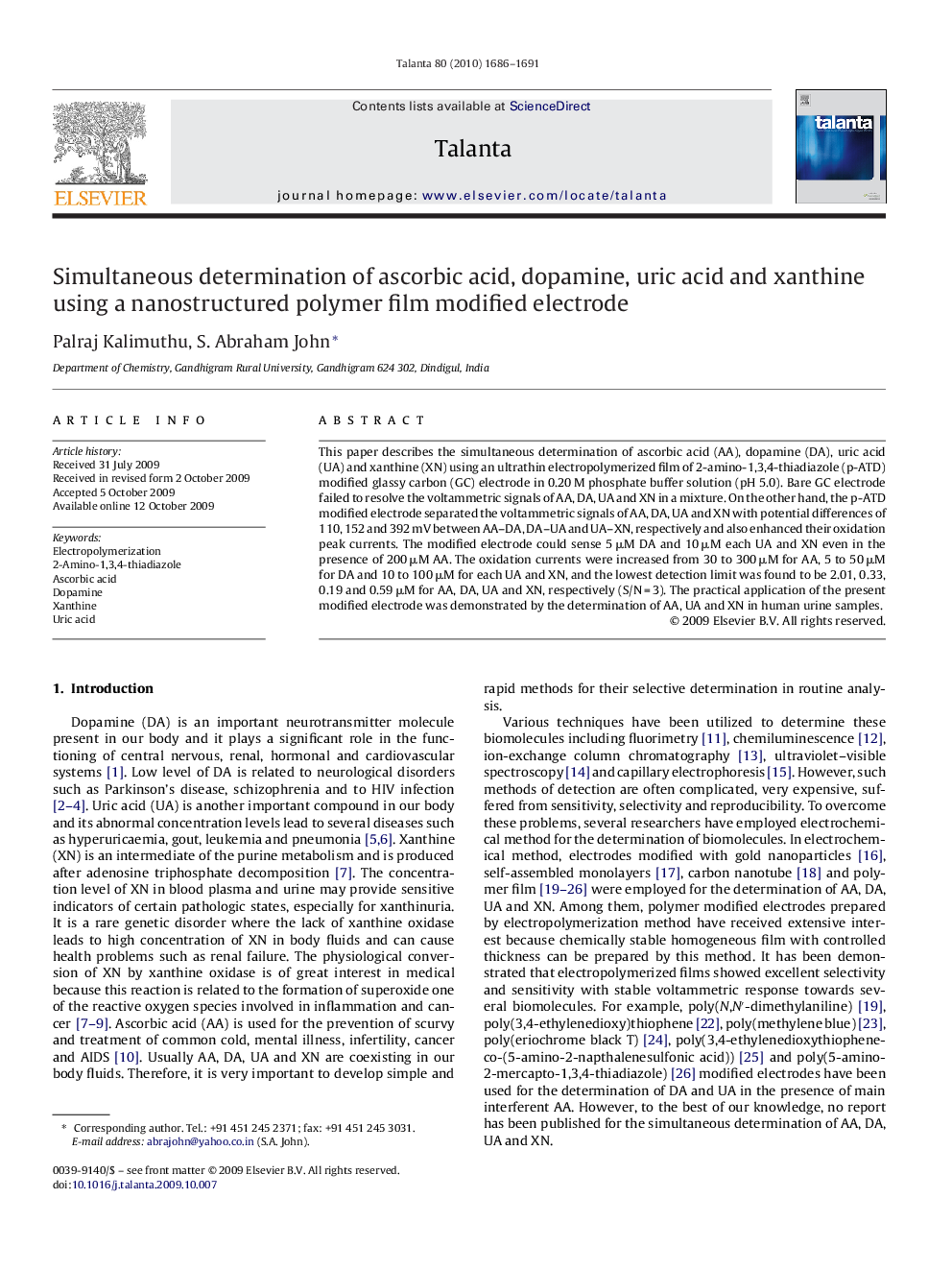| Article ID | Journal | Published Year | Pages | File Type |
|---|---|---|---|---|
| 1242967 | Talanta | 2010 | 6 Pages |
This paper describes the simultaneous determination of ascorbic acid (AA), dopamine (DA), uric acid (UA) and xanthine (XN) using an ultrathin electropolymerized film of 2-amino-1,3,4-thiadiazole (p-ATD) modified glassy carbon (GC) electrode in 0.20 M phosphate buffer solution (pH 5.0). Bare GC electrode failed to resolve the voltammetric signals of AA, DA, UA and XN in a mixture. On the other hand, the p-ATD modified electrode separated the voltammetric signals of AA, DA, UA and XN with potential differences of 110, 152 and 392 mV between AA–DA, DA–UA and UA–XN, respectively and also enhanced their oxidation peak currents. The modified electrode could sense 5 μM DA and 10 μM each UA and XN even in the presence of 200 μM AA. The oxidation currents were increased from 30 to 300 μM for AA, 5 to 50 μM for DA and 10 to 100 μM for each UA and XN, and the lowest detection limit was found to be 2.01, 0.33, 0.19 and 0.59 μM for AA, DA, UA and XN, respectively (S/N = 3). The practical application of the present modified electrode was demonstrated by the determination of AA, UA and XN in human urine samples.
